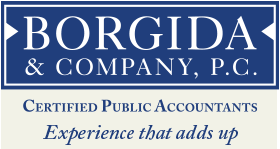
caption?
In December, 2017 President Trump signed the new tax bill. This is known as the Tax Cuts and Jobs Act (TCJA). What received a lot of attention in the media was the tax cuts for individuals. For Connecticut taxpayers, check out Four Easy Steps for CT Taxpayers to Plan for Their 2018 Income Tax.
Also, as part of the TCJA, for eligible entities, there is a new 20% Pass-Through Deduction, which is also known as a Section 199A deduction. As an offset to this tax break, a deduction was removed with the passing of the TCJA. This was the Domestic Production Activity Deduction (DPAD) or Section 199 deduction which has been removed and is no longer available beginning in 2018. This deduction was limited just to companies that manufacture goods in the United States.
The new Section 199A deduction however is not limited to just manufacturers. It is available for all pass-through entities including:
- Sole Proprietors
- Rental Income on Schedule E
- Partnerships
- Limited Liability Companies (LLC’s)
- Subchapter S Corporations (read why CT business-owners should elect Subchapter S)
These are called pass-through entities as the profits or losses are passed through to the owners who then pay the income taxes. This pass-through deduction is not available to so-called C Corporations as they are not a pass-through entity. C Corporations are a separate legal and taxable entity.
While this deduction will be very helpful for qualified entities, to take advantage of this, caution should be exercised. This is a new section of the Internal Revenue Code and it is very complex. Additionally, we are still awaiting guidance about many issues from the Internal Revenue Service.
Details of the deduction
The pass-through income tax deduction is based on what is called Qualified Business Income (QBI). QBI is what your pass-entity earned subject to some adjustments. What would not be counted in QBI is:
- Interest income
- Dividends
- Capital gains from the sale of property
- W-2 Wages received from a Subchapter S Corporation
- Guaranteed payments received from a Partnership or LLC
- Retirement account withdrawals
- Business income generated outside the U.S.
The 20% deduction is calculated based on the lesser of:
- Eligible QBI
- Taxable income (before applying the QBI deduction) less capital gains
In terms of how much of a potential deduction is allowed, there are really three categories based on income.
- Taxpayers married filing jointly with taxable income under $315,000 or single taxpayers with taxable income under $157,500. These taxpayers will not need to apply any of the tests higher income taxpayers will need to see if they are entitled to the full deduction.
- Taxpayers in a ‘Specialty Trade or Business’ will be faced with an income limit. These trades or businesses include:
– Accountant
– Actuarial Science
– Athletics
– Brokerage Services
– Consultant
– Financial Services
– Investing and investment management
– Health (dentist, doctors, etc.)
– Law
– Performing arts
– Trading and dealing in securities or commoditiesEssentially this is a list of professional service providers. What’s noticeably absent from this list of specialty trade or business is architects and engineers. The logic here was that they produced a tangible, physical product and are not just service businesses. Architects and engineers are not subject to the income tests mentioned above.For taxpayers in these ‘Specialty Trade or Business’ if they are married filing jointly with taxable income under $315,000 or single with taxable income under $157,500, they are entitled to the full 20% pass-through deduction.For a married couple filing jointly with taxable income between $315,000 and $415,000 they will get a partial deduction. Similarly, a single filer with taxable income between $157,000 and $207,500 will also get a partial deduction. When taxable income exceeds $415,000 for a married couple filing jointly or $207,500 for a single filer they will not be entitled to the 20% pass-through deduction. - Taxpayers married filing jointly with taxable income over $415,000 and or single taxpayers with taxable income over $207,500 that are not in the Special Trade or Business mentioned above will have an additional test to pass.
The QBI deduction is the lesser of either 20% of QBI or the greater of either:
- 50% of the W-2 wages of the business; or
- The total of 25% of W-2 wages plus 2.5% of the unadjusted basis of all of the ‘qualified property’ in the business
A couple of observations. First, this 20% deduction is based on taxable income, not adjusted gross income (AGI). Deductions taken to arrive at AGI are so-called above-the-line deductions.
The so called below-the-line deductions is either itemized deductions or the standard deduction, whichever was higher. The most common itemized deductions are mortgage interest, property taxes and state income taxes and charitable donations. The pass-through deduction is neither an above-the-line deduction in arriving at AGI, nor is it part of the itemized deductions. This deduction stands on its own.
Second, as mentioned above, this is complicated. For higher income taxpayers you will need to run a projection to see what the potential 20% pass-through deduction could mean to you.
A Basic Example
Here is a basic example. Joe is a plumber who runs his business as a sole-proprietor and earns $250,000 a year. His QBI deduction would be $50,000 ($250,000 times 20%). He is married and files a joint income tax return with his wife. His federal income tax bracket is 24%. His QBI deduction is worth $12,000 of tax saving ($50,000 deduction times 24% tax rate). Joe is now a very happy plumber.
For more information on how the tax bill JCTA affects you check out 7 Ways the 2017 Tax Bill Affects Connecticut Taxpayers.


